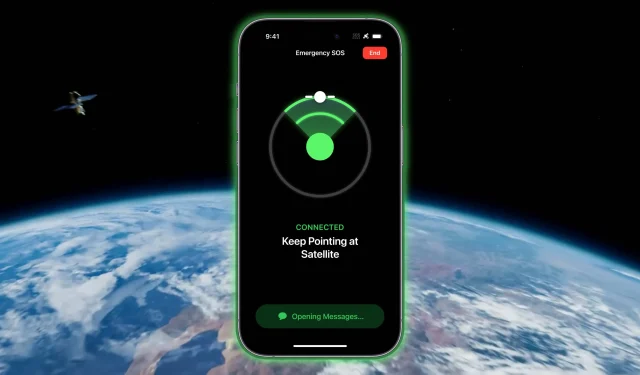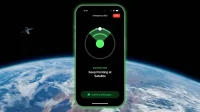We teach you how to send emergency SOS texts via satellite on your iPhone when you are in an area where there are no cell towers.
Apple hopes that you will never need the satellite SOS emergency call feature.
Introduced at the iPhone 14 event on September 7, Emergency SOS via Satellite allows your iPhone’s antennas to connect directly to the satellite and communicate with an emergency service provider instead of using your carrier’s cellular network.
What is Emergency SOS via satellite? How it works?
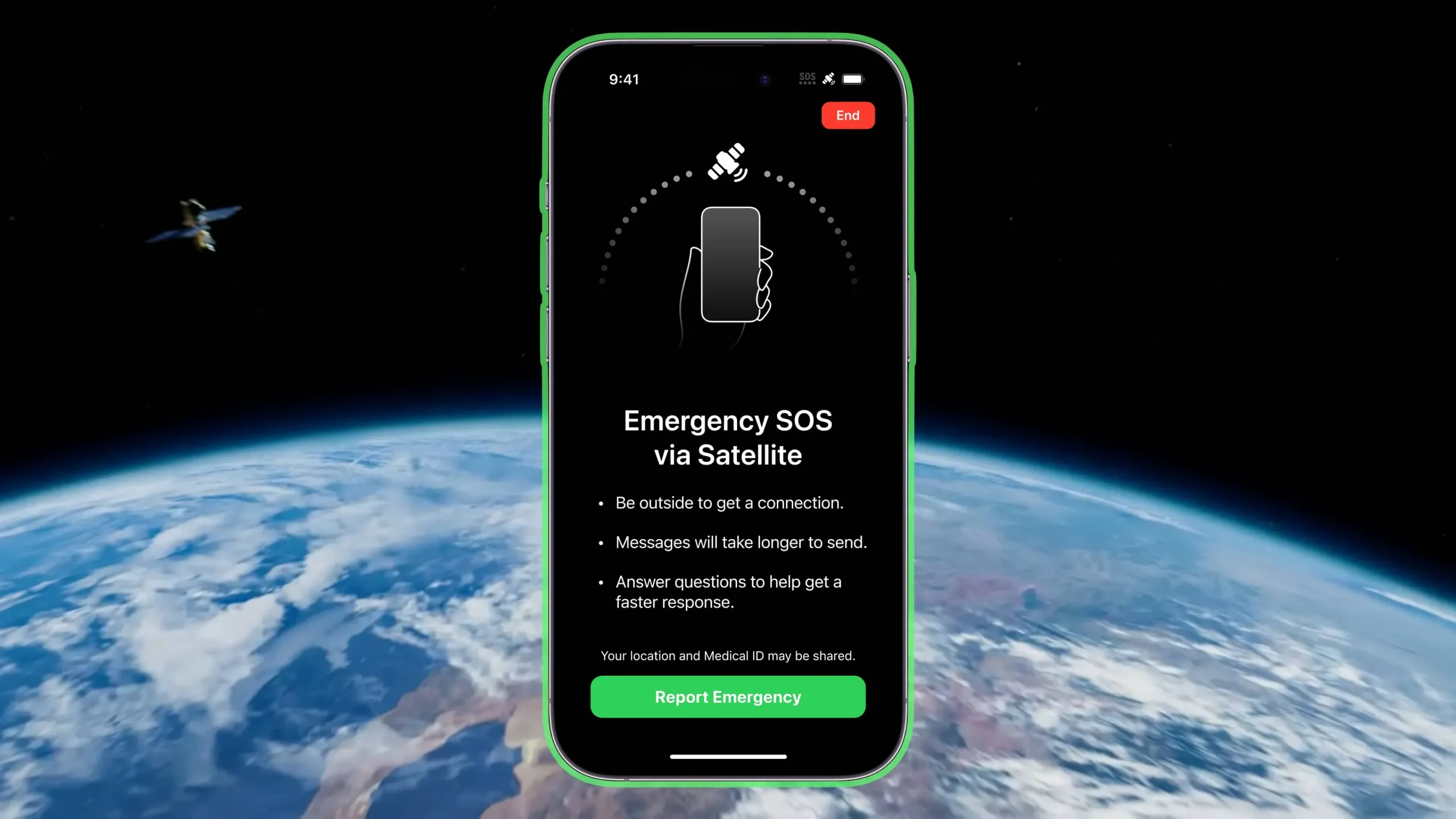
What can you do via satellite when there is no cellular connection or Wi-Fi:
- Activate emergency SOS function
- Manually share your location with Find My
So if you happen to go camping in an area without cell service and find yourself stranded or injured, you can contact your local emergency services and seek help.
Here is Apple’s description of this feature:
Satellites are moving targets with low bandwidth, and messages can take several minutes to transmit. Because every second counts, with an emergency SOS call via satellite, the iPhone pre-loads several vital questions to assess the user’s situation and shows them where to point their phone to connect to the satellite. The initial questionnaire and subsequent messages are then relayed to centers staffed by Apple-trained professionals who can seek assistance on behalf of the user.
Follow along with us to learn how to use Emergency SOS via satellite.
How to use Emergency SOS via satellite on iPhone
Hold down the power button and volume button at the same time to make an emergency call, and your iPhone 14 will prompt you to send an SMS if there’s no cellular or Wi-Fi connection. Read: How to set up and use Emergency SOS on Apple Watch
- Press and hold the power button and one of the volume buttons until the Emergency SOS slider appears.
- Drag the Emergency SOS slider to call the local emergency services in your area.
- A normal call should fail and you should see a “No connection”message at the top. Now press the button labeled Emergency Text via Satellite. Alternatively, you can send a 911 or SOS message in the Messages app and then select Emergency Services.
- Now tap on the “Report emergency”option.
- Answer a few questions to describe your situation as accurately as possible.
- Follow the on-screen prompts to connect your iPhone to the satellite.
- Once you’re connected, continue to follow these instructions to keep the connection alive so the message can get through.
Emergency SOS will share several important data with emergency services, including your medical ID, emergency contacts, answers to emergency questions, location (including altitude), and your iPhone’s remaining battery.
System Requirements for Emergency SOS via Satellite
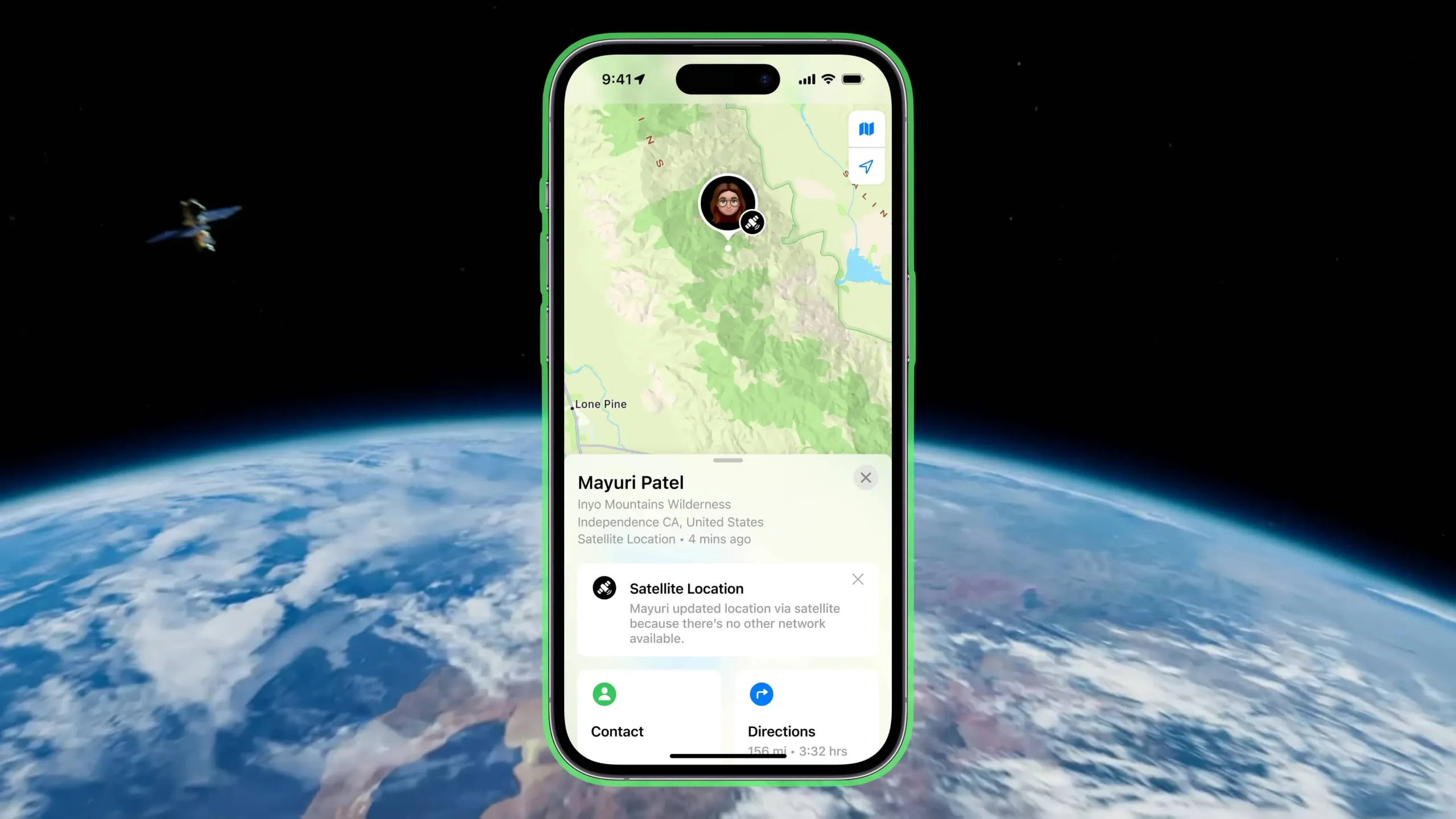
Using the Emergency SOS feature over a satellite connection is supported on iPhone 14 and iPhone 14 Pro models running iOS 16.1 and later.
Devices supporting emergency SOS call via satellite
- iphone 14
- iphone 14 plus
- iphone 14 pro
- iPhone 14 Pro Max
The public release of iOS 16.1 is scheduled for November.
This feature is supported for customers in Canada and the US, including Puerto Rico and the US Virgin Islands. It is not available in Guam and American Samoa.
While Emergency SOS via satellite is supported on all iPhone 14 models, this feature is not available on iPhones sold in mainland China, Hong Kong, or Macau.
Apple notes that emergency SOS via satellite may not work in geographic locations above 62° latitude, such as northern parts of Canada and Alaska.
Satellite connection tips
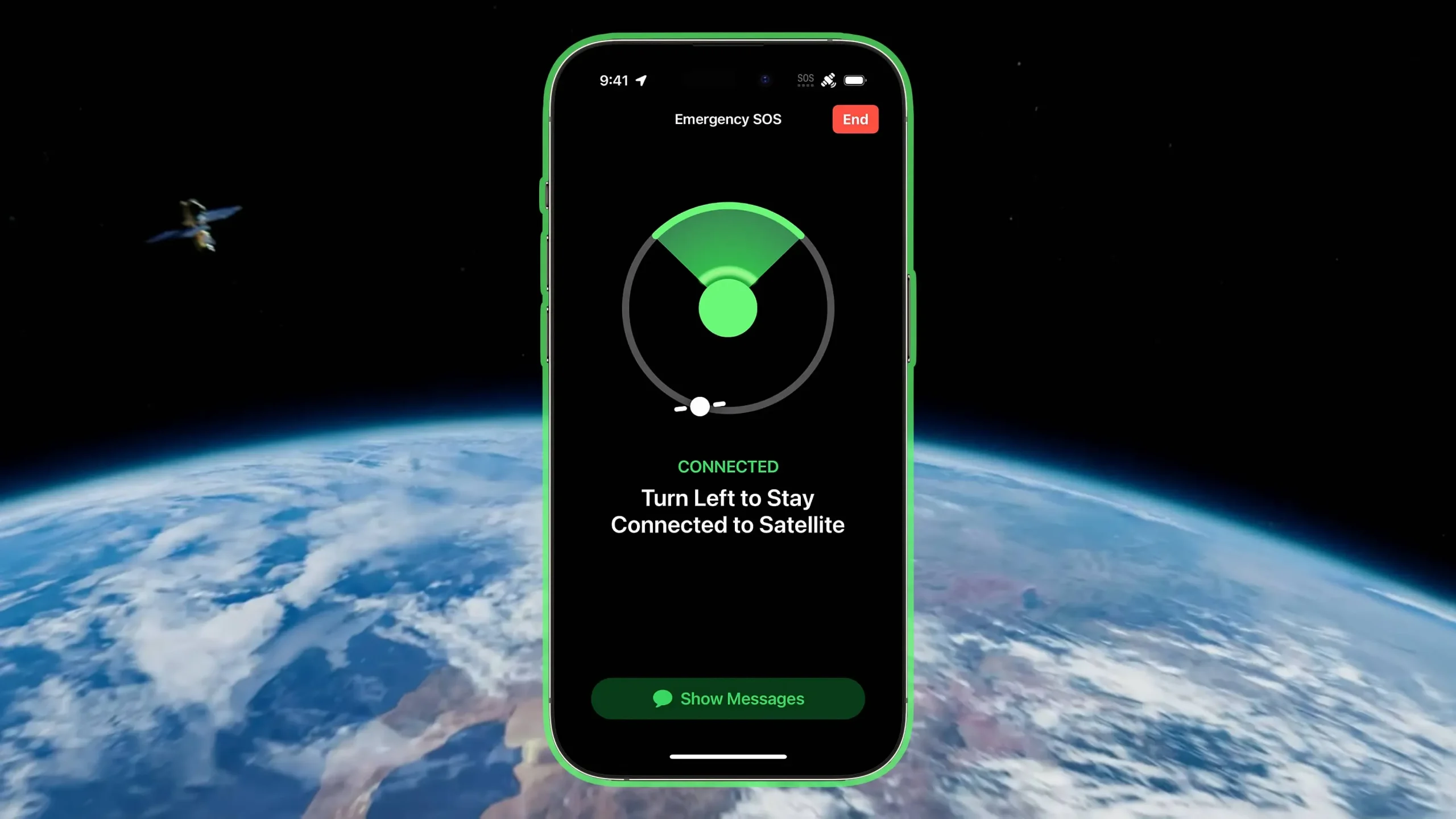
To connect to a satellite, you must be outside and have a clear view of the sky with no buildings, trees, or other objects blocking it. Trees with light foliage can slow down the connection, while dense foliage can block it.
- Pick up your iPhone as usual. Hold your iPhone as usual, there is no need to hold your device up to connect to the satellite.
- Take your iPhone out of your pocket. If your iPhone is in your pocket, purse, or bag, take it out before trying to connect to a satellite to improve reception.
- Establish a clear line-of-sight: Having a clear view of the sky and horizon is critical to connecting to a satellite in low Earth orbit.
- Avoid large objects. Any large objects such as skyscrapers and mountains, as well as tall structures such as canyons and hills, can block or degrade your connection.
Apple’s support document explains that once your iPhone successfully establishes a satellite connection, it will be maintained even if the device is locked.
Emergency SOS via satellite and your privacy
Your messages are sent to Apple encrypted to prevent eavesdropping.
Once the message is decrypted, Apple then sends it to the appropriate authority, such as a local emergency dispatcher or emergency relay center, who may retain the message to improve their services.
“In order to route your text messages to your local emergency service and help rescuers reach you, your location will be shared with Apple and its partners when you use Emergency SOS via satellite,”explains Apple.
Why is satellite connection so slow?
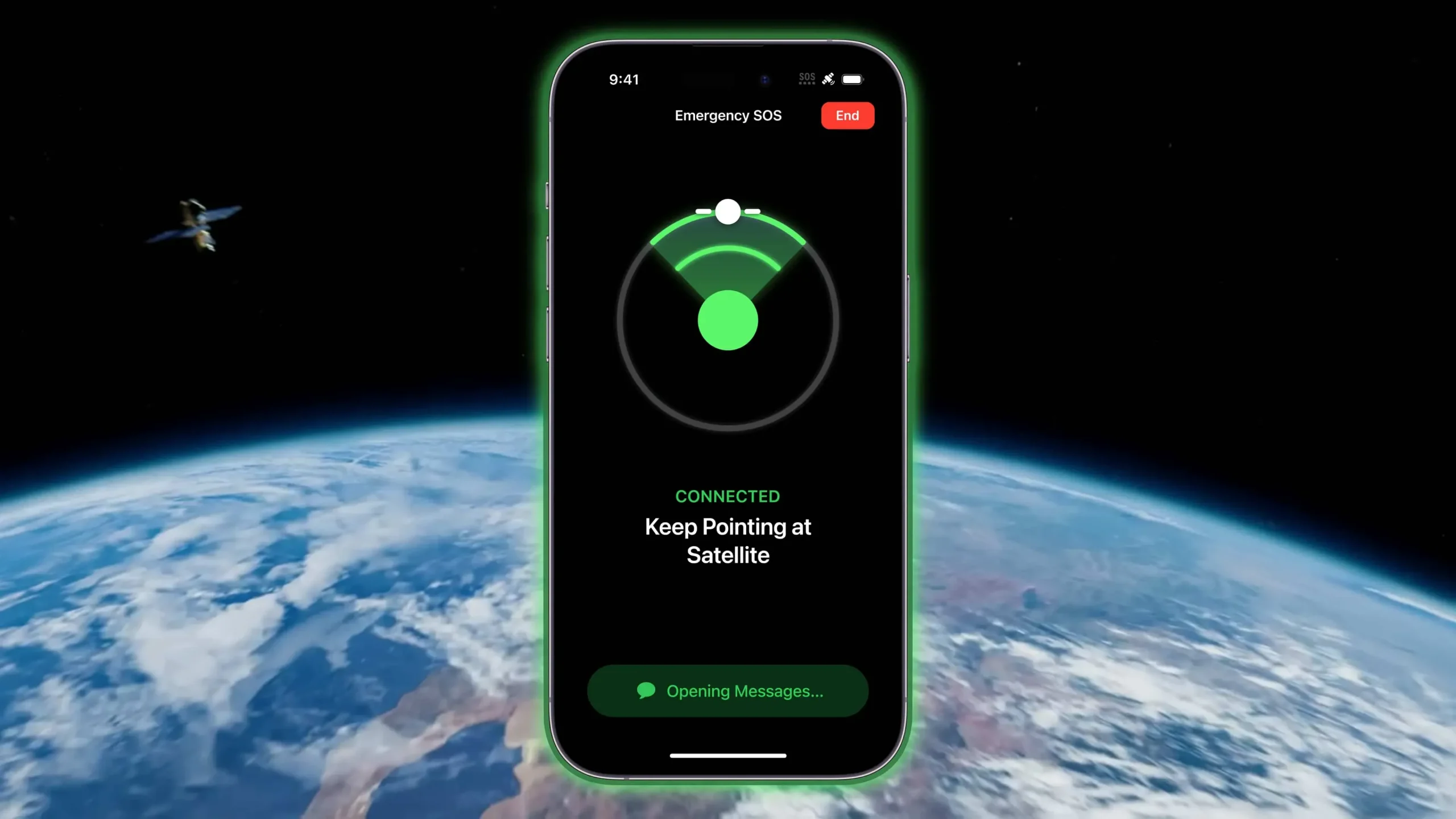
The satellite connection is slow, so be prepared to wait a few seconds to a few minutes to send a single text, as Apple explains:
When you use a satellite connection, the experience is different from sending or receiving a message over cellular. Under ideal conditions with a direct view of the sky and horizon, a message can take fifteen seconds to send, and over a minute to send under trees with light to medium foliage. If you are under dense foliage or surrounded by other obstructions, you may not be able to connect to the satellite.
In addition, the connection time depends on the surroundings, the length of your message, and the condition and availability of the satellite network.
Can travelers use Emergency SOS via satellite?
Yes, travelers visiting the United States or Canada can use Emergency SOS via satellite, unless their phone was purchased in mainland China, Hong Kong, or Macau.
How much does an emergency SOS call cost via satellite?
When it arrives in November, Emergency SOS via satellite will be free for two years. After that, you will need to start paying to continue using Emergency SOS via satellite. Apple hasn’t said how much the paid service will cost, but we’ll update this article as soon as it does.
